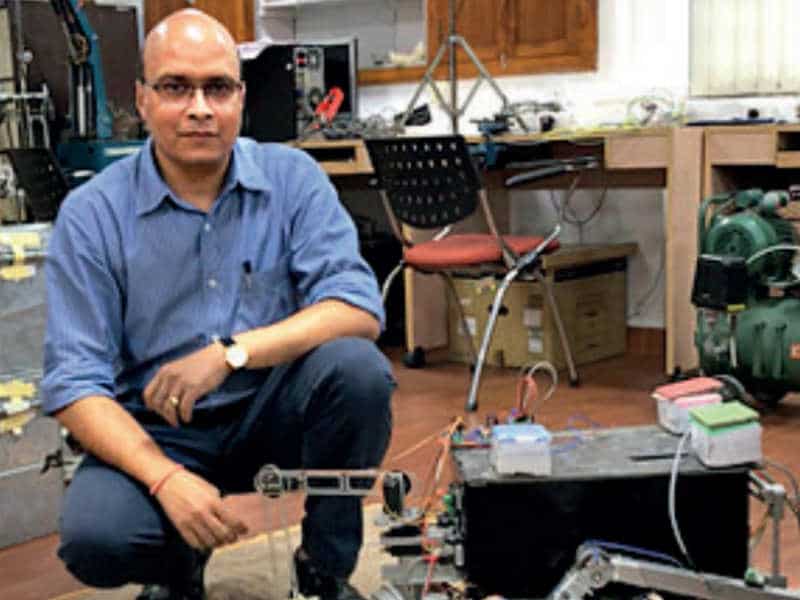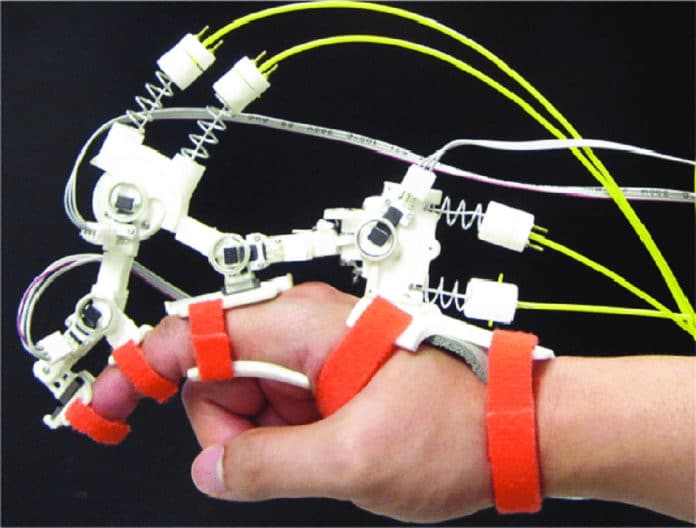The two IIT-Kanpur professors, Ashish Dutta, and KS Venkatesh have developed a two-finger robotic exoskeleton hand to help stroke patients.
The new device is a brain-computer interface (BCI) based control of hand exoskeleton for rehabilitation of stroke patients. This two-finger hand uses a four-bar mechanism and has four degrees of freedom( DOF).
There are many conditions that possibly developed after a stroke which includes weakness, numbness, and stiffness that improves with time and rehabilitation. Patients face a lot of mental and physical stress during this period. Certain questions often arise in their mind like ‘how to gain control and independence in everyday living situations’. This new device can bring joy to the paralytics.
The new exoskeleton made by IIT-K professors can be worn by a patient on his hand. It uses the brain signals send by brain-computer interface worn on the head. Using these signals, it then helps paralytic patients open and closes the motion of their thumb, index and middle fingers for physical practice. The device is powered by a battery and will cost around Rs 15000, according to the professors.

Now, the two professors have ventured into the world’s first robot exoskeleton hand for the rehabilitation of stroke patients and finished its trials.
Besides, the duo is very excited about Chandrayaan-2 launch mission scheduled for July 15. A six-wheeled robot called Pragyan, that will land on the lunar surface after it is sent aboard GSLV-MKIII by Isro. Pragyan has two subsystems – one of which is structured light-based map generation and another one is motion planning, which was built by IIT-K duo.
“It is a proud moment and double joy for us while we recall the algorithm, which we made for lunar mission Chandrayaan to help the rover move safely between one point and another. The structured light is like a scanning laser that will survey the surface of the moon, will take pictures and generate 3D maps and path planning. Now, our next mission is completing large-scale clinical trials of the exoskeleton in India and the UK,” Dutta told the Times of India.
These two have also teamed up with UK-based Ulster University for the exoskeleton.
